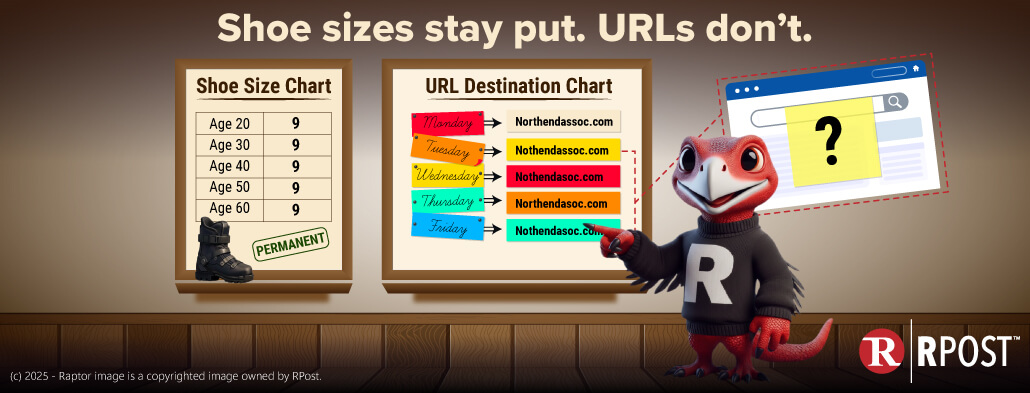
Having received some recent inquiries from customers about relying on RPost’s service records (in particular, the Registered Receipt™ emails associated with the Registered Email™ services for email proof and the email encryption service) in the context of responding to e-discovery requests, we have added the following quick reference for paper and resources to the e-discovery court rules in the United States.
E-Discovery Amendments to the Federal Rules of Civil Procedure
Effective -December 1, 2006
The amendments to the Federal Rules of Civil Procedure concerning the discovery of “electronically stored information” go into effect today. The package includes revisions and additions to Rules 16, 26, 33, 34, 37, and 45, as well as Form 35. Material regarding the amendments may be accessed on the U.S. Court’s Federal Rulemaking website. The e-discovery amendments originated with the Advisory Committee on Civil Rules, which first heard about problems with computer-based discovery in 1996 and began intensive work on the subject in 2000. The Advisory Committee considered numerous alternatives, perspectives, and ideas in determining whether amendments specifically addressing electronic discovery were necessary, and, if so, what the language of any such amendments should be. In August 2004, the Committee published its proposed amendments. Following the public comment period – during which over 250 individuals and organizations provided feedback – the Advisory Committee made several additional modifications, resulting in the final package of amendments that was ultimately approved by the Judicial Conference and the United States Supreme Court.
The amendments cover five related areas, which are described in more detail below:
(a) definition of discoverable material;
(b) early attention to issues relating to electronic discovery, including the format of production;
(c) discovery of electronically stored information from sources that are not reasonably accessible;
(d) the procedure for asserting claim of privilege or work product protection after production; and
(e) a “safe harbor” limit on sanctions under Rule 37 for the loss of electronically stored information as a result of the routine operation of computer systems.
In addition, amendments to Rule 45 correspond to the proposed changes in Rules 26-37.
1. Definition of Discoverable Material
The amendments introduce the phrase “electronically stored information” to Rules 26(a)(1), 33, and 34, to acknowledge that electronically stored information is discoverable. The expansive phrase is meant to include any type of information that can be stored electronically. It is intended to be broad enough to cover all current types of computer-based information, and flexible enough to encompass future changes and technological developments.
2. Early Attention to Electronic Discovery Issues
Several of the amendments require the parties to address electronically stored information early in the discovery process, recognizing that such early attention is crucial in order to control the scope and expense of electronic discovery, and avoid discovery disputes. Rule 26(a)(1)(B) adds electronically stored information to the list of items to be included in a party’s initial disclosures. Rule 16(b)(5) adds provisions for the disclosure or discovery of electronically stored information as an item that may appropriately be included in the court’s scheduling order. Rule 26(f) expands the list of issues that must be discussed as a part of the meet and confer process, and includes a requirement that parties develop a discovery plan that addresses issues relating to the discovery of electronically stored information – including the form or forms in which it will be produced. It also requires parties to discuss any issues relating to the preservation of discoverable information, and address issues relating to claims of privilege or work product protection.
3. Format of Production
An amendment to Rule 34(b) addresses the format of production of electronically stored information, and permits the requesting party to designate the form or forms in which it wants electronically stored information produced. The rule does not require the requesting party to choose a form of production, however, since a party may not have a preference or may not know what form the producing party uses to maintain its electronically stored information. The rule also provides a framework for resolving disputes over the form of production, in the event that the responding party objects to the requested format(s). Finally, the rule provides that if a request does not specify a form of production, or if the responding party objects to the requested form(s), the responding party must notify the requesting party of the form in which they intend to produce the electronically stored material – with the option of producing either (1) in a form in which the information is ordinarily maintained, or (2) in a reasonably usable form.
4. Electronically Stored Information from Sources that Are Not Reasonably Accessible
Amended Rule 26(b)(2) creates a two-tiered approach to the production of electronically stored information, making a distinction between that which is reasonably accessible, and that which is not. Under the new rule, a responding party need not produce electronically stored information from sources that it identifies as not reasonably accessible because of undue burden or cost. If the requesting party moves to compel discovery of such information, the responding party must show that the information is not reasonably accessible because of undue burden or cost. Once that showing is made, a court may order discovery only for good cause, subject to the provisions of the current Rule 26(b)(2)(i), (ii), and (iii). *
This two-tier system seeks to provide a balanced, equitable approach to resolve the unique problem presented by electronic stored information which is often located in a variety of locations of varying accessibility – strongly favoring the production of relevant information from more easily accessible sources where possible. This provision received a great deal of attention during the public comment period, and the Advisory Committee made substantial changes to both the proposed rule and to the accompanying notes to address the concerns voiced, and to balance the interests of both requesting and responding parties. The responding party receives protection from being forced to tap hard-to-access sources, where retrieving information or determining the presence of responsive content cannot be achieved without incurring substantial burden or cost. The requesting party benefits from knowing the sources the responding party does not intend to search, and has a method of obtaining this information if it is truly warranted.
Find More: Secure Email Software
5. Asserting Claim of Privilege or Work Product Protection After Production
The addition to Rule 26(b)(5) sets forth a procedure through which a party who has inadvertently produced trial preparation material or privileged information may nonetheless assert a protective claim as to that material. The rule provides that once the party seeking to establish the privilege or work product claim notifies the receiving parties of the claim and the grounds for it, the receiving parties must return, sequester, or destroy the specified information. The Committee Note clearly states that the rule does not address whether the privilege or protection was waived by the production, but simply prohibits the receiving party from using or disclosing the information, and requires the producing party to preserve the information, until the claim is resolved.
6. “Safe Harbor”
Much of the commentary received during the public comment period on the e-discovery amendments focused on the Rule 37(f) safe harbor provision. This rule provides that, absent exceptional circumstances, a court may not impose sanctions on a party for failing to provide electronically stored information lost as a result of the routine, good-faith operation of an electronic information system. It responds to the routine modification, overwriting, and deletion of information that attends the normal use of electronic information systems.
The Advisory Committee notes that the “routine operation of an electronic information system” refers to the ways in which such systems are generally designed and programmed to meet the party’s technical and business needs, and includes the alteration and overwriting of information that often takes place without the operator’s specific direction or awareness. The Committee further observes that such features are “essential to the operation of electronic information systems,” and that there is “no direct counterpart in hard-copy documents.”
The protection of Rule 37(f) applies only to information lost due to the routine operation of an information system, and only if such operation was in good faith. The Committee Note discusses the effect that the existence of a preservation obligation may play in determining whether or not the operation was in good faith, and expressly cautions: “A party cannot exploit the routine operation of an information system to evade discovery obligations by failing to prevent destruction of stored information that it is required to preserve.”
*In the pending rules, these provisions are located at Rule 26(b)(2)(C).

December 26, 2025

December 19, 2025

December 12, 2025

December 05, 2025

November 21, 2025